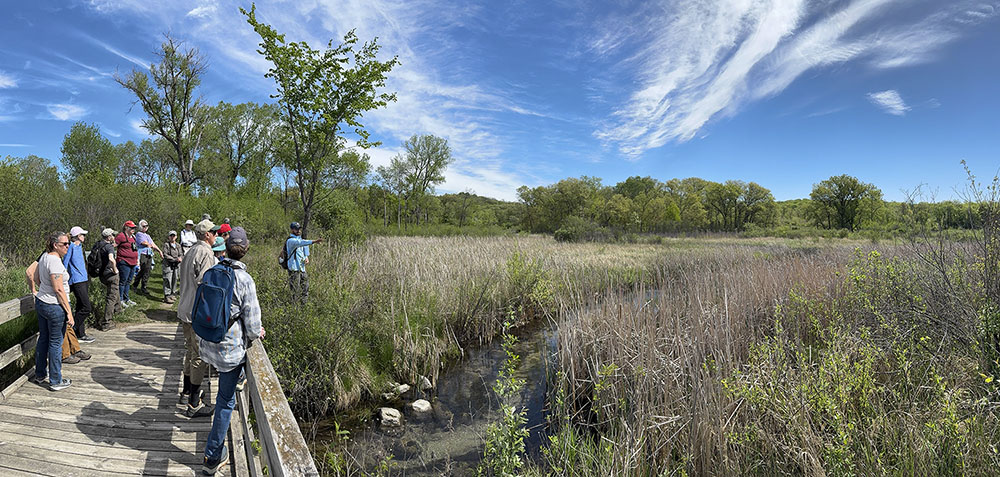
Exploring the Scuppernong Springs Nature Trail: Legacy of Land and Glacier
June 22, 2025 | Topics: Places
By Eddee Daniel
Springs are inherently enticing, it seems to me. There is something mesmerizing—almost magical—about seeing pure, clear water bubbling freely out of the earth. It can serve as a healthy reminder that our drinking water doesn’t originate at the end of a pipe. This is one of the reasons that the Scuppernong Springs Nature Trail in the Southern Unit of the Kettle Moraine State Forest is quite popular. It’s one of the few easily accessible places in Southeast Wisconsin where you can see springs in action.
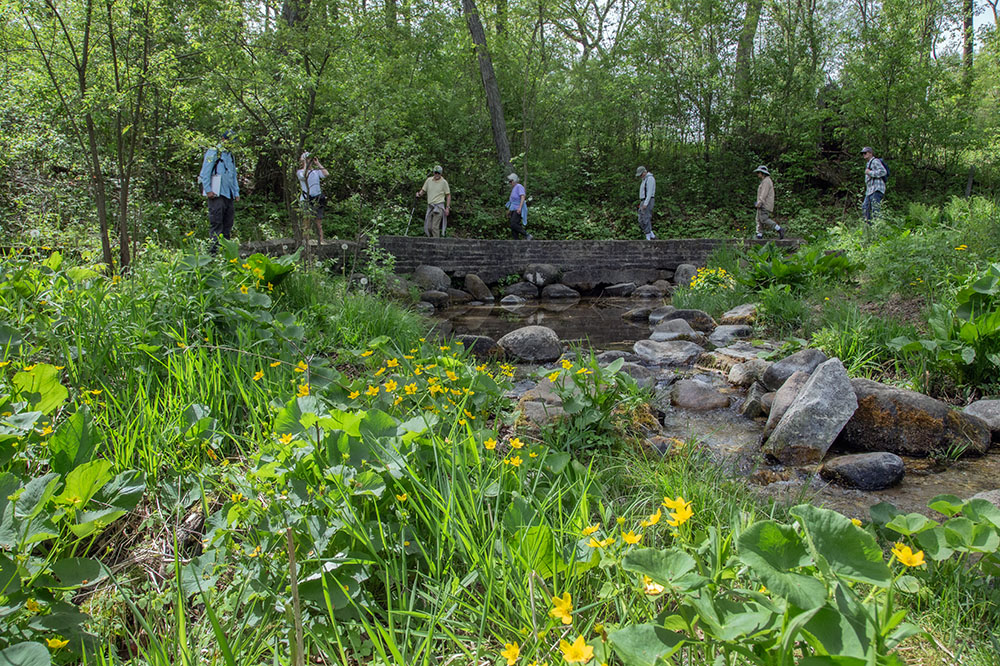
And not just one spring, either. The trail loops around a small dell at the headwaters of the Scuppernong River, passing by six or seven spots identified as springs. Some seep out of the surrounding hillside, but others visibly bubble straight up out of the silt in the river—which at this point is a small creek. People have been drawn to this spot for millennia.
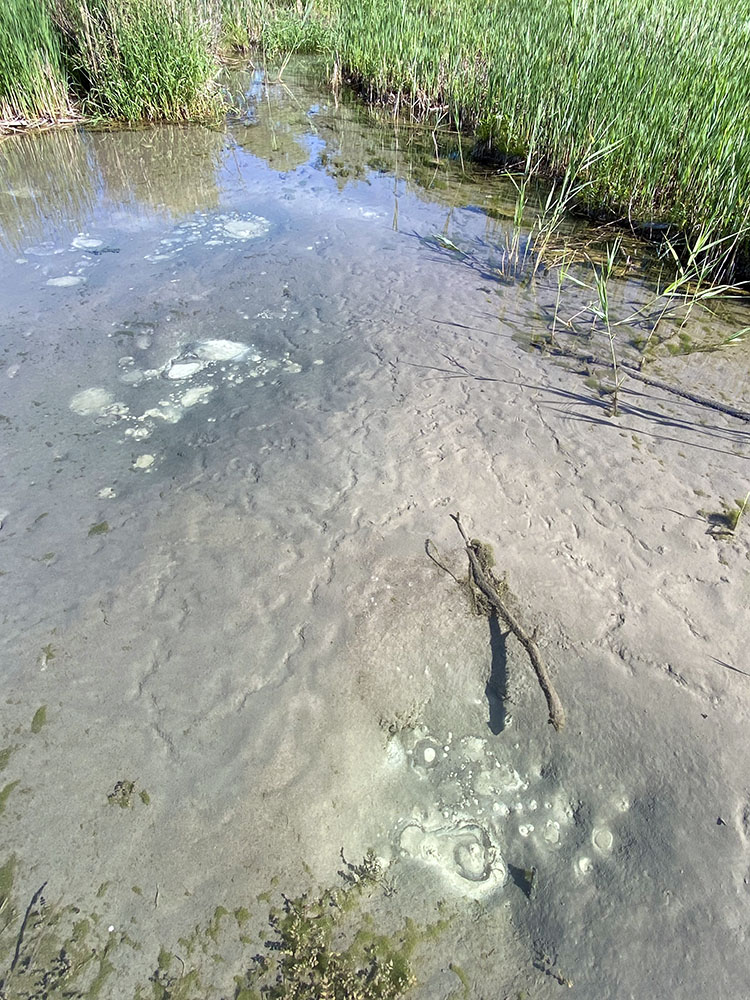
However, there is much more to the Scuppernong Springs Trail and its vicinity than the springs and the flowing water, as I learned recently on a guided tour led by a pair of WIDNR ecologists. The land within and around the 1.5-mile looping trail contains a remarkable and surprising number of distinct ecosystems and plant communities, some of which are quite rare. These include Southern Dry Forest, Sand Prairie, Wet-mesic Prairie, Calcareous Fen, Southern Sedge Meadow, Oak Savanna and ephemeral ponds. The high quality of these communities has led to a great diversity of species thriving within a relatively small area.
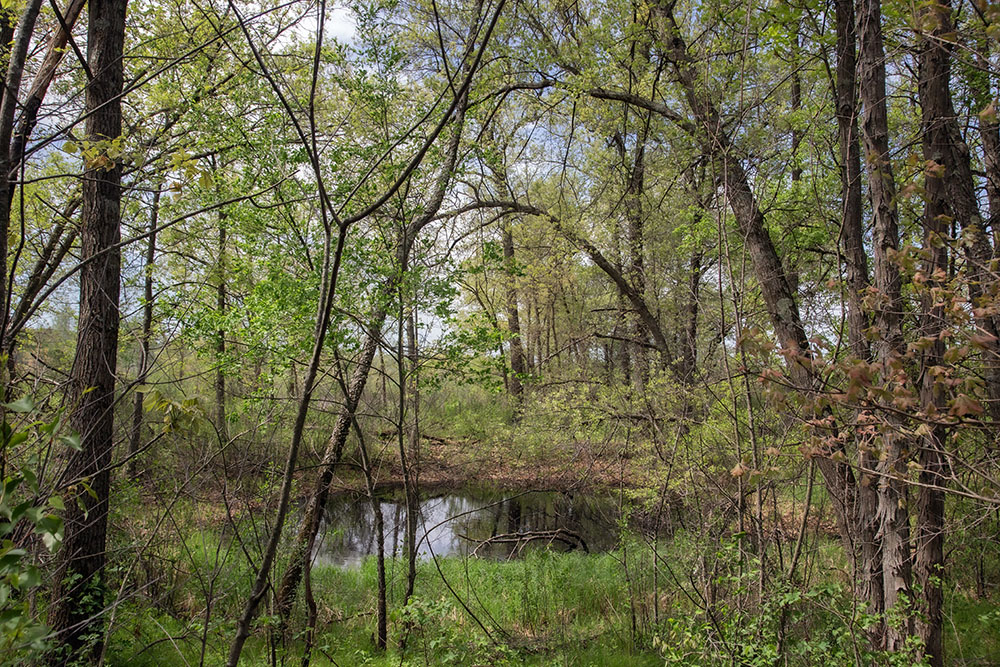
The gently rolling terrain and the distinctive soils that enable the establishment of the various ecosystems are the product of the glaciers. At one point in the tour our group stood on an upland, sandy prairie dotted with young oak trees and looked to the west over a wetland that stretched as far as we could see. Our guides explained that this was the eastern edge of what at one time was a vast glacial lake known as Lake Scuppernong, which was larger than all of Jefferson County. The lake formed as meltwater accumulated between the terminal moraines to the south and the receding Green Bay Lobe of the glacier during the last Ice Age over 10,000 years ago.

The glacial lake is long gone. The Scuppernong River now meanders through the Scuppernong Basin, which includes wet-mesic prairie and 3,000-acre Scuppernong Marsh, before it empties into the Bark River just west of Palmyra. Another legacy of the lake are deposits of a type of calcium carbonate-rich soil called marl. A spur of the trail leads us alongside a long, narrow pond. This unnatural-looking feature is the result of many years of marl extraction. The tens of thousands of tons of limy marl removed was used as fertilizer as well as mortar in construction. Ruins of the marl processing plant are still visible along the trail.

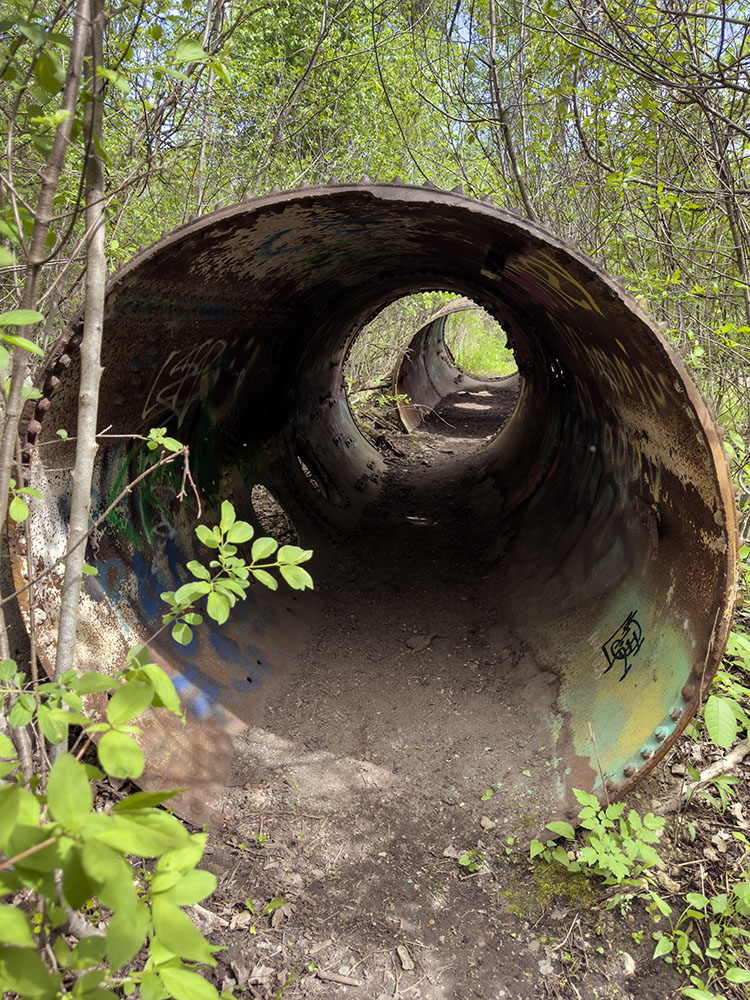
Our guides pointed out and named many of the plants that we passed along the trail. Some, like the lupines and columbines, were showy and easy to spot. But one of the most important was an unpretentious flower that I would have completely overlooked had I been alone. Kittentail flowers are long, spiky and not very colorful. The species is endemic to the Upper Midwest region, meaning it grows only here. A threatened species, it is rare in most of its range, except in the Southern Kettle Moraine, which has the most robust population in Wisconsin.

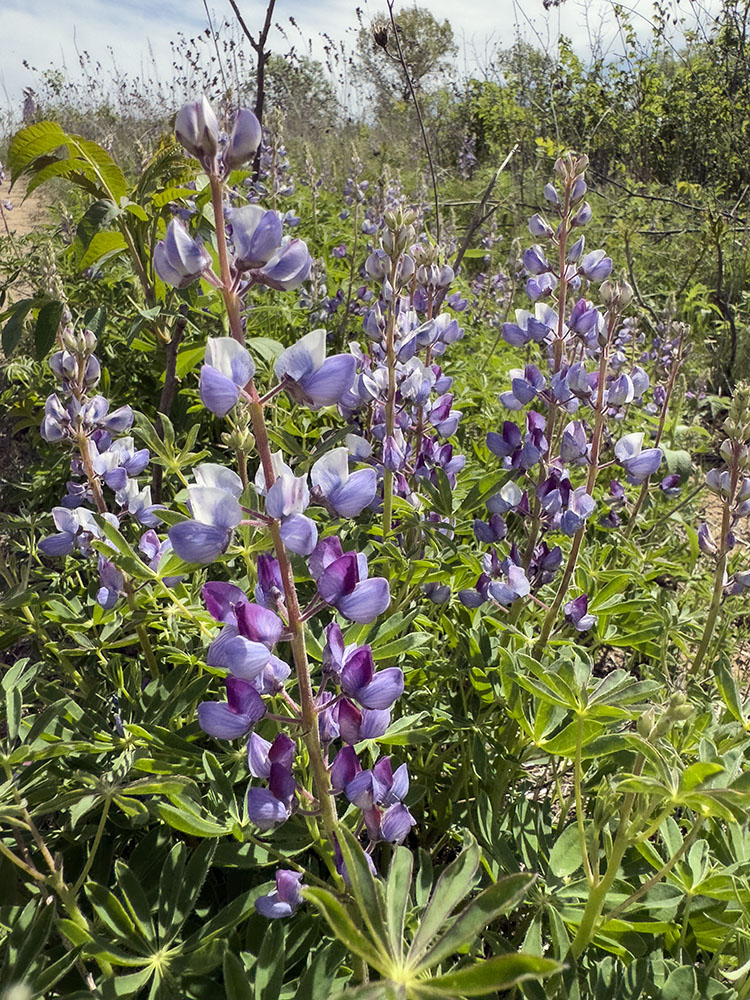
Although the quality of the various ecosystems has a lot to do with the soil and topography, it also requires a significant amount of human effort to maintain. Fire (controlled burning) is the single most powerful and cost-efficient management tool. Grasslands, savannas and oak woodlands require periodic fire to maintain a healthy native plant community. Ideally, these areas are burned regularly on a rotating 3-5-year schedule.
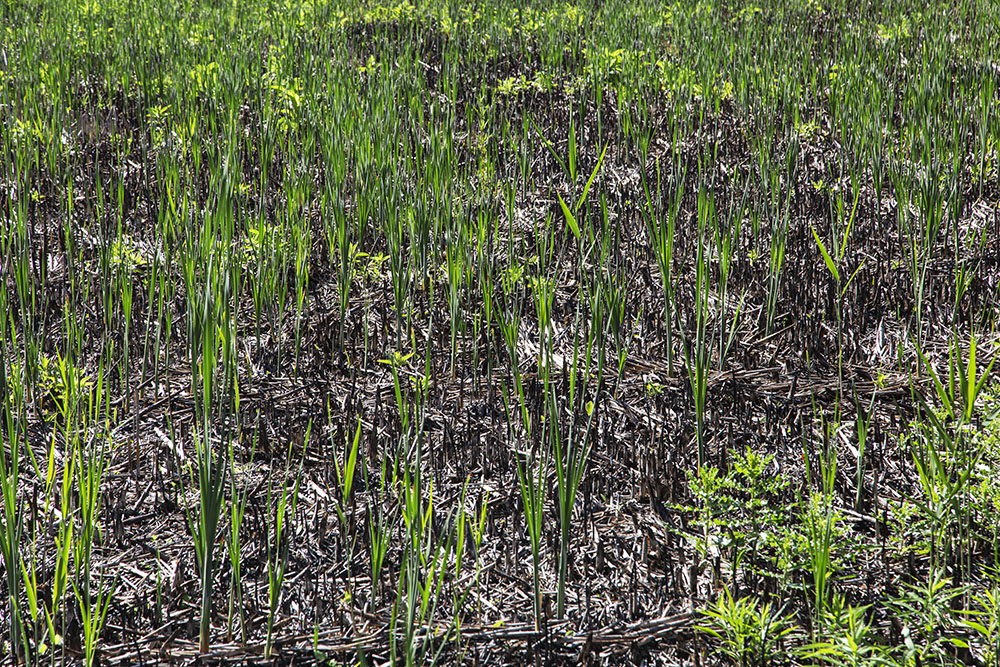
Burning serves several purposes. Among the most important is reducing those invasive species that have not adapted to be fire resistant. Some native species even require regular burning in order to propagate. Because so few remnant prairies exist today, portions are left unburned to allow fire-sensitive invertebrates to survive, thereby enabling more species diversity.
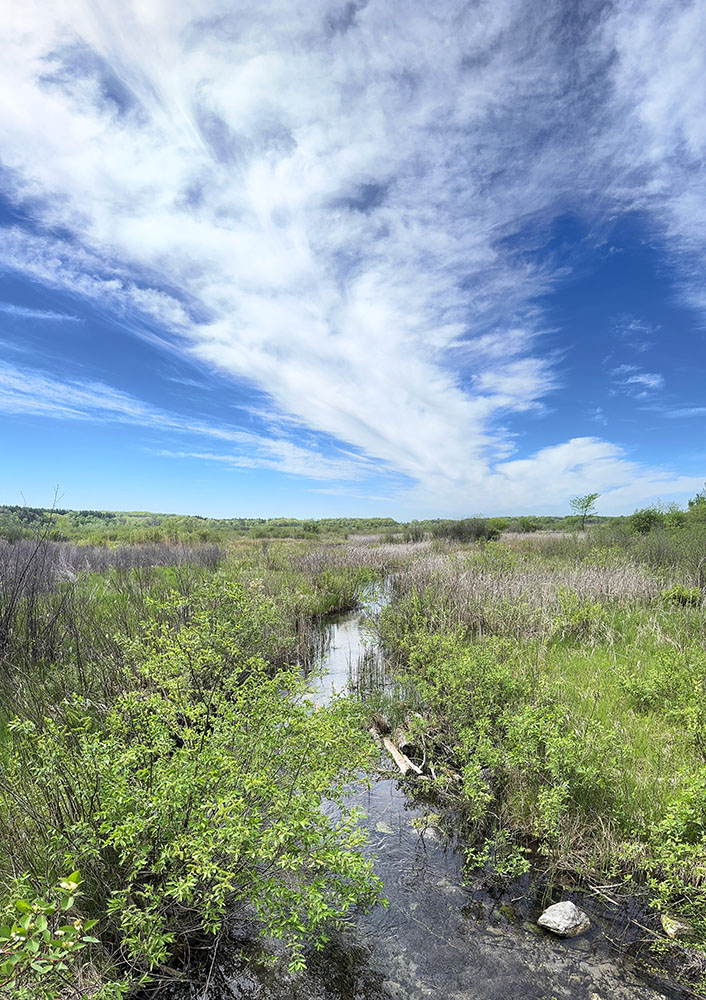
Some native species require management as well. Willows (like other ‘brushy’ species) can be problematic when they become too dense or tall, threatening to fill in an open grassland or wetland. Fire helps to slow or reduce their incursion in those ecosystems.

Fire helps restore the native community structure and also creates opportunities to control invasives using other management techniques. Targeted herbicides are sometimes needed. Phragmites is a very troublesome invasive species that grows much taller than cattails and other reed grasses. I was fascinated to learn that there is a tool called a weed wiper—essentially a giant roller—that is used to selectively apply herbicide only to the taller target species. Being shorter, the native species are left unharmed.
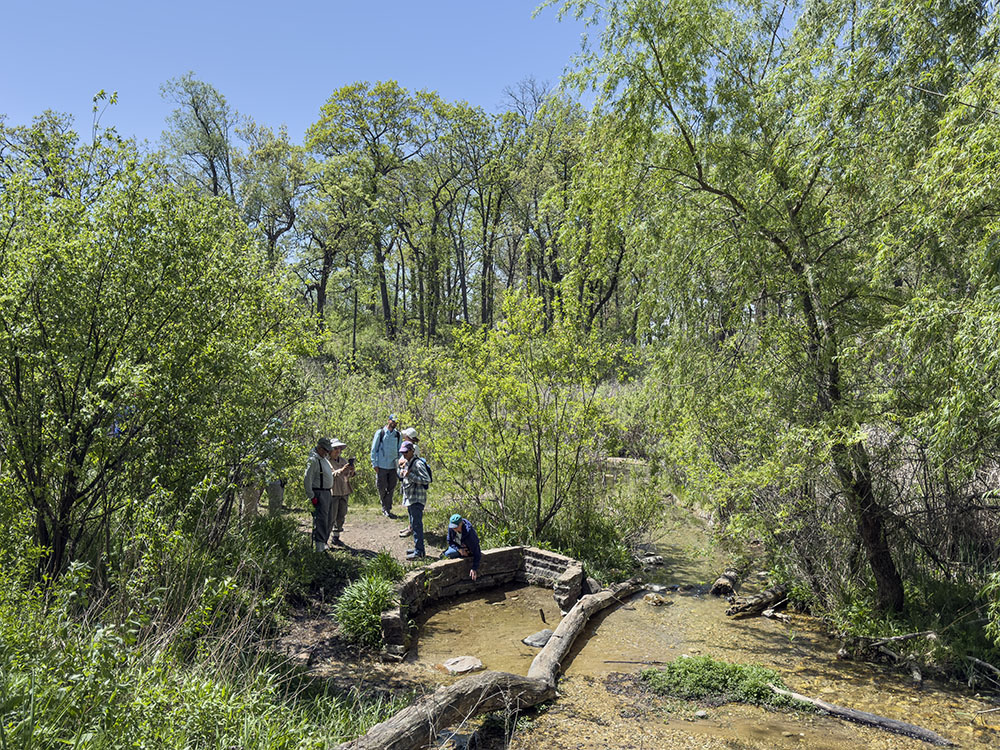
In addition to its ecological importance, the Scuppernong Springs area has a rich history of human activity as well, extending much farther back than the advent of colonial settlement. Little remains of the variety of businesses and other operations that once sprung up around the springs. But you can access a DNR guidebook online that will tell you all about them.
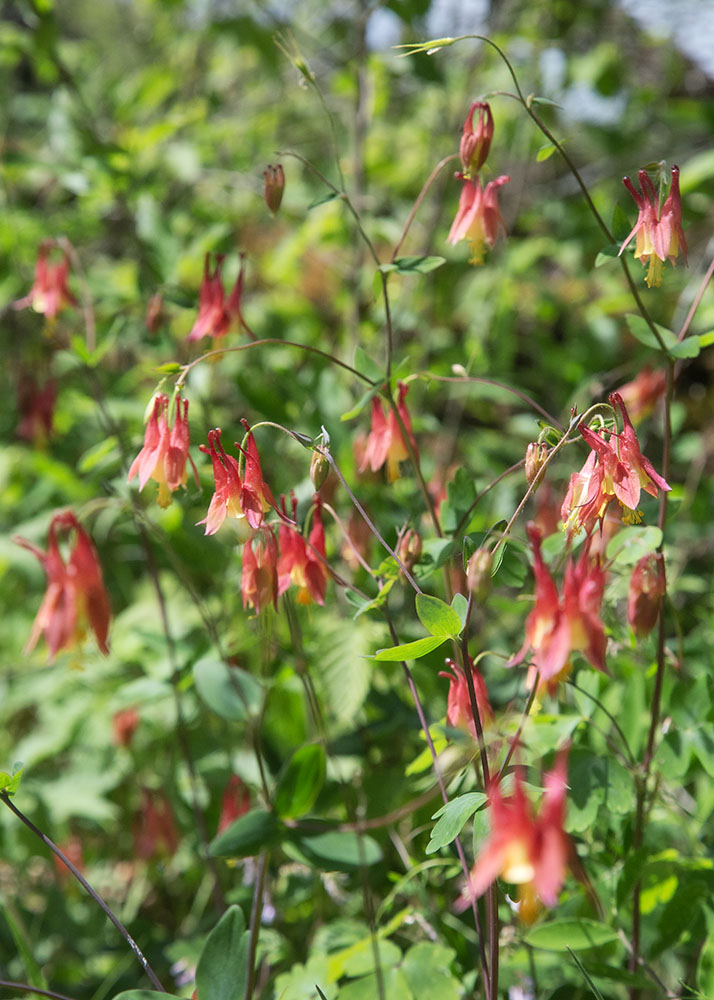
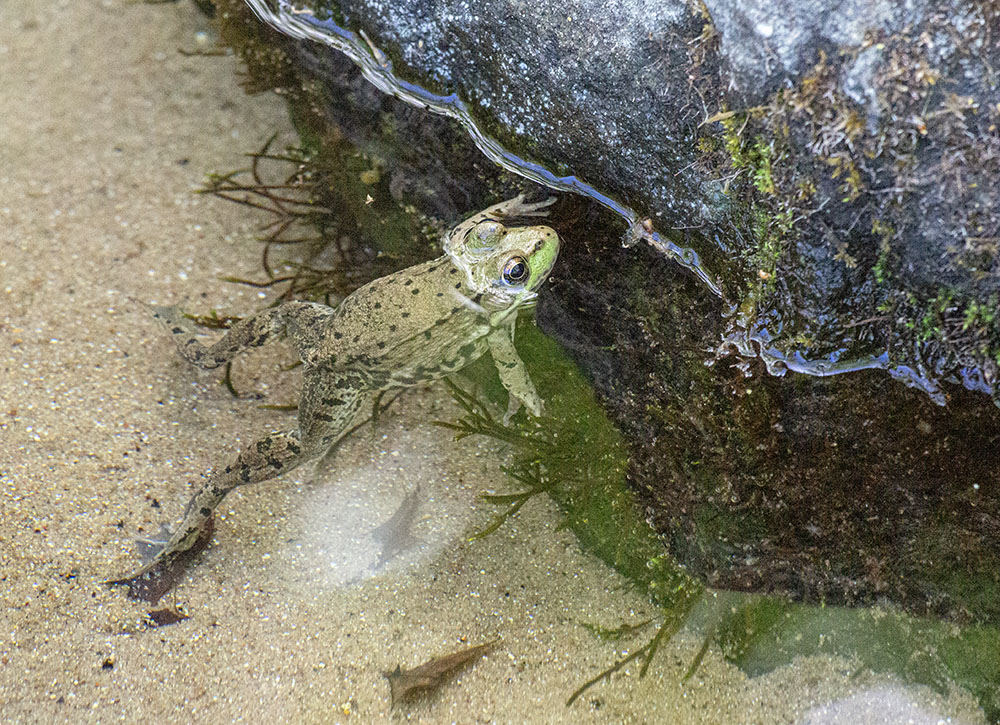
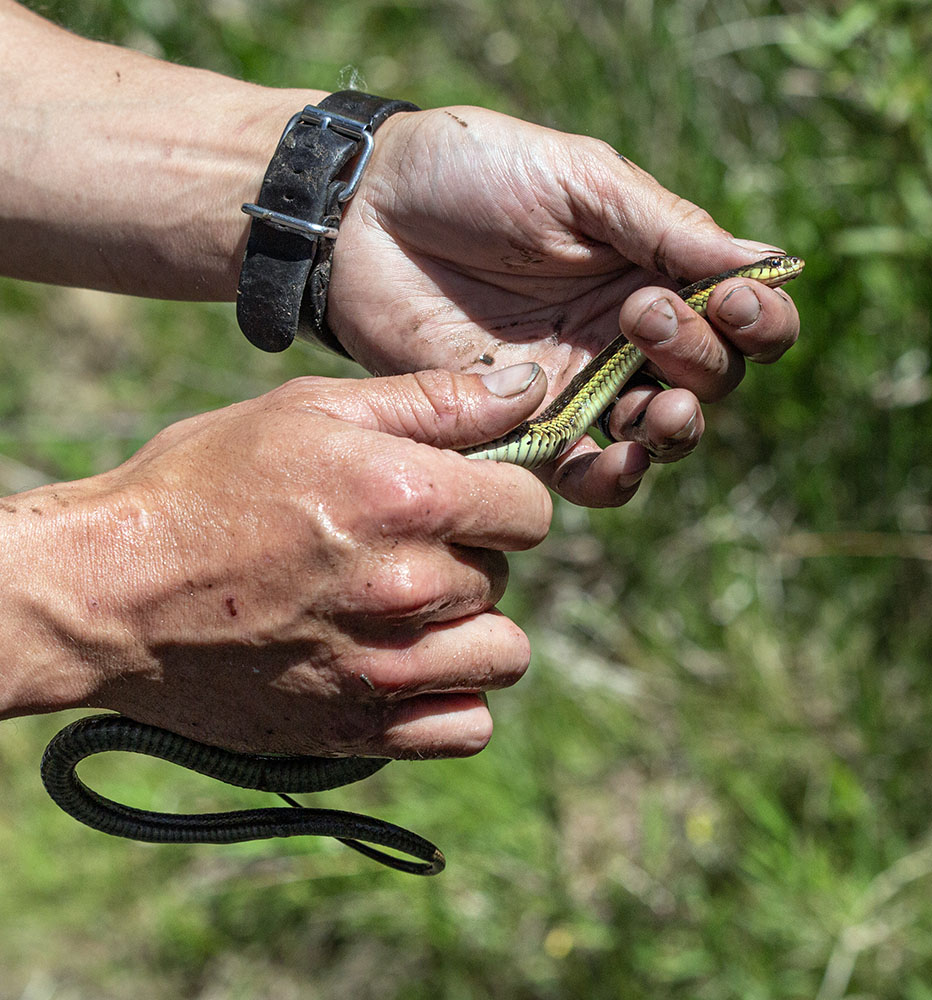
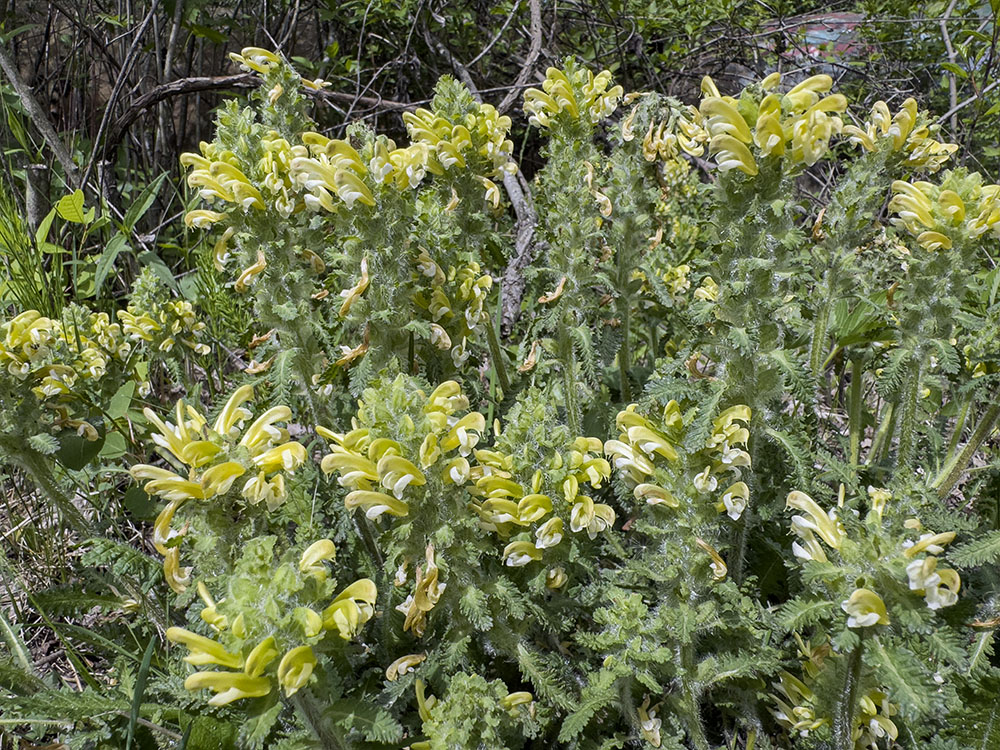
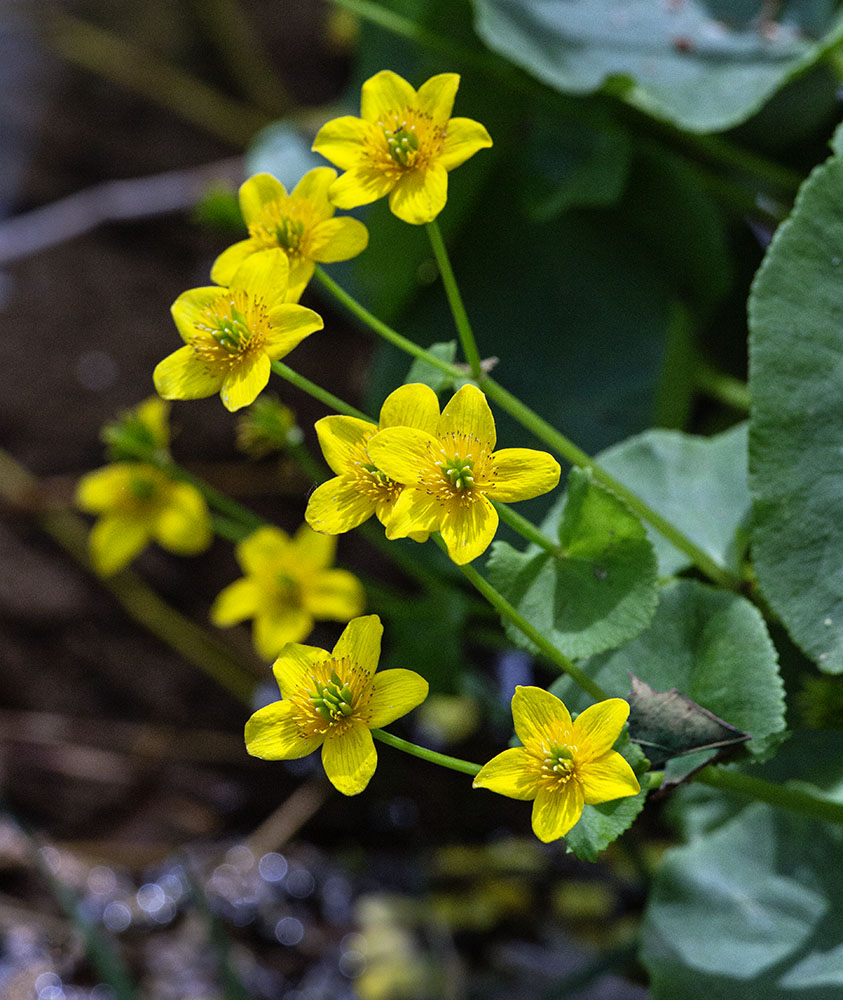
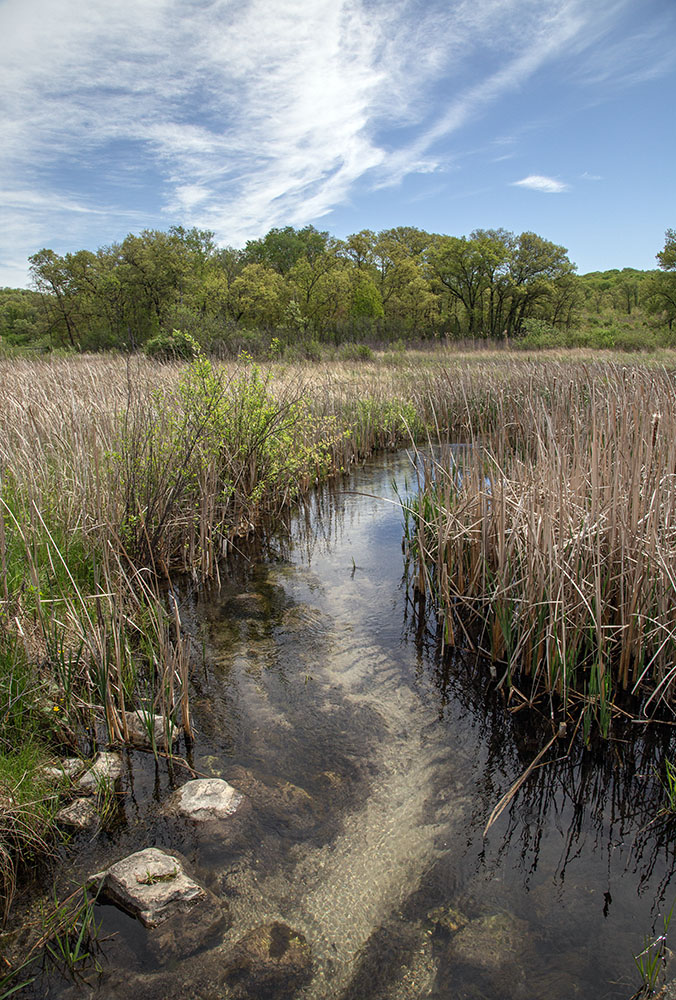
I want to thank Peter Duerkop and Cory Peters, our DNR guides, who provided much of the information for this story. And a shout out to the Natural Resources Foundation of Wisconsin, which organized this guided tour—and organizes many others like it.
For more information go to our Scuppernonong Springs Nature Trail page and/or the Southern Unit of the Kettle Moraine State Forest page of our Find-a-Park map.
Stories related to the Southern Unit of the Kettle Moraine State Forest:
Scuppernong Springs Nature Trail: A Saunter Through History.
Young Prairie: Restoration and Recreation
Stute Springs: Tracking wildlife and so much more!
OutWiGo Green brings thousands to Ottawa Lake despite the rain!
Eddee Daniel is a board member of Preserve Our Parks and a field trip leader for the Natural Resources Foundation of Wisconsin. The Natural Resources Foundation of Wisconsin is a project partner of A Wealth of Nature.
One thought on "Exploring the Scuppernong Springs Nature Trail: Legacy of Land and Glacier"
Comments are closed.


Scuppernong Springs Nature Trail. One of my favorite places. You captured it so well! Thank you! Eddee